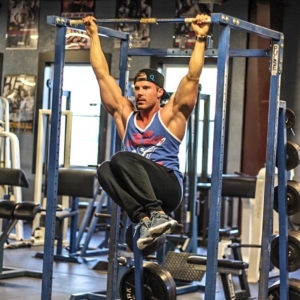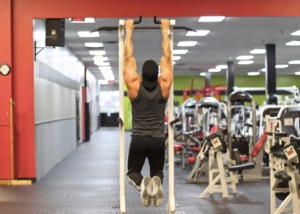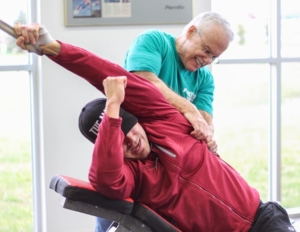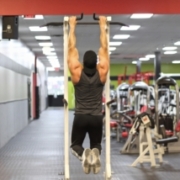I have received several recent questions related to shoulder pain. Those who have experienced shoulder discomfort to any significant degree are painfully aware of the limitations that it imposes, not only on training, but also on general daily function. I have become increasingly convinced that most of us could be protecting our shoulders and relieving common causes of discomfort by making a very simple addition to our daily routines.

Several years ago, on days when I would perform a number of upper body pressing exercises, I would experience a fair amount of shoulder discomfort. As a Physical Medicine and Rehabilitation physician and musculoskeletal “expert”, I was largely living the “do as I say, not as I do” adage when it came to training the shoulder and chest muscles. I understood that performing an adequate warm-up, balancing and strengthening the rotator cuff muscles, and maintaining proper range of motion while paying close attention to biomechanics are of premier importance for optimal training and preservation of joint health. Despite my knowledge of this, when time was constrained (and when is it not?), I would take short cuts and fail to properly address these things.
Over time, I began to experience symptoms of shoulder impingement. One of the most common causes of shoulder discomfort, impingement classically results from an inflammation and irritation of the supraspinatus muscle (one of the four rotator cuff muscles) as it passes beneath parts of the shoulder called the acromion and coracoacromial ligament – together, the coracoacromial arch (CA arch). This condition can cause pain, weakness, and limited range of motion. It is often aggravated by overhead movements or by lying on the affected side.

After having dealt with the discomfort for some time, I began to hang from a bar between sets of bench press, shoulder press, and other pressing movements. Before long, I began to notice a significant improvement in how my shoulders felt during the workouts. This led to me to further consider the potential importance of joint distraction for optimal function and overall joint health. I began to think about the possible consequences of repeatedly engaging in weighted exercises that create joint compression without also performing joint distraction.
As members of the primate family, humans share very similar anatomy with monkeys, chimpanzees, and orangutans. As it applies to functional anatomy, one readily apparent difference in the way that we use our shoulders is that we don’t get around by swinging from tree to tree. The use of arm swinging in arboreal locomotion is known as brachiation. Considering that most of us are unlikely to have engaged in brachiation since the time of jungle gyms and monkey bars during childhood, I became interested in the anatomical and biomechanical implications of hanging in an arms-overhead position.
I figured that hanging from a bar was likely to alter the fluid pressures in and around the shoulder, therefore encouraging changes in the ways in which the blood and synovial fluid are delivered to the tissue comprising the shoulder structures. Perhaps this would enhance oxygenation and nutrient delivery to these regions. Additionally, I presumed that hanging from a bar was likely to stretch muscles, tendons, ligaments, and fascia that are otherwise seldom stretched. I wondered whether this could impart permanent anatomic changes that would alter the ways in which the structures of the shoulders articulate and function.

As I dug deeper, I discovered that Dr. John Kirsch, an orthopedic surgeon who had been struck by similar curiosity, has done some pretty neat work on this concept of hanging. In the course of his investigations, Dr. Kirsch performed CT scans of subjects’ shoulders while simulating the hanging position. To do this, he had subjects lie in a CT scanner with their arm raised overhead while they held a rope that was attached to a 40-60lb. weight, creating traction on the shoulder joint. The images that were obtained from these scans revealed that in this position, the head of the arm bone – the humerus, lifted the CA arch.
Given that the space under the CA arch through which the supraspinatus muscle and tendon pass can narrow over time due to bony changes, stiffening and contracture of ligaments, and development of muscular imbalances, the idea is that repeated hanging could create more space. If done consistently, it will lift the arch and stretch many of the structures that had previously caused narrowing and impingement of the supraspinatus. This, in turn, will decrease the irritation and inflammation that commonly cause shoulder pain.
Surgically, acromiopasty procedures are often performed to decompress and widen the region of impingement. Wouldn’t it be nice, however, if we could widen this space without the need for surgical intervention? Perhaps it’s possible.
I generally recommend the following protocol:
-Perform very light, high-rep dumbbell lateral raises within a range of motion that does not cause discomfort. This will warm up the shoulder joints and soft tissue.
-Hang from a bar for 3 sets of 30 seconds.
-Perform the hanging stretches 5 days per week.
If you cannot comfortably hang with the full weight of your body, it’s okay to keep your feet in contact with the floor and perform this with partial bodyweight.

Though you’ll want to first discuss the cause of your shoulder pain and appropriateness of this protocol with your physician, I have noted successful alleviation of pain with use of this routine even in individuals with partial rotator cuff tears. In the hanging position, the supraspinatus (the most commonly torn rotator cuff muscle) is relaxed and sits safely behind the acromion.
If you’ve been dealing with shoulder discomfort, or simply have an interest in maintaining optimal joint health, consider adding this to your routine.



